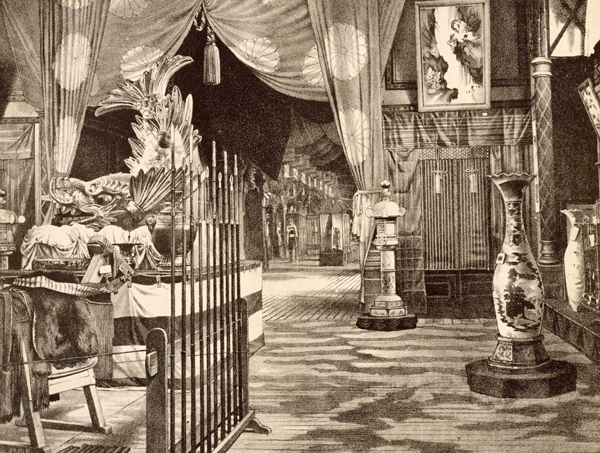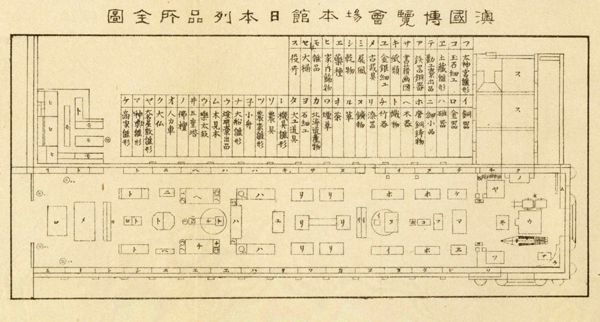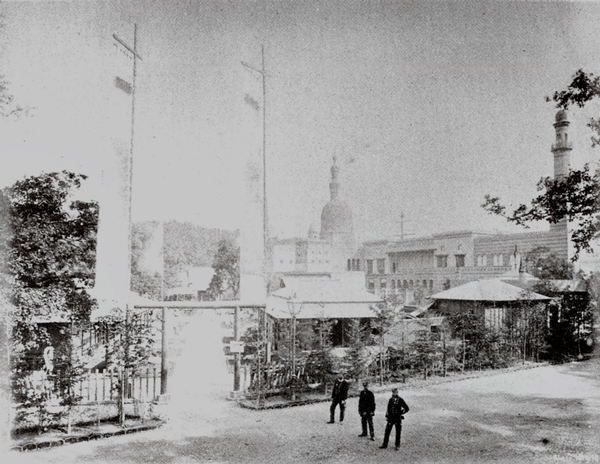2.The World's Fair in Vienna : The origin of the Japanese modern museum

Area where exhibits from Japan were displayed
The World's Fair in Vienna was held in 1873 to commemorate the 25th anniversary of the reign of Emperor Franz Joseph I.
When the Japanese government received an official invitation in 1871 to take part in the Fair, it created the Exposition Bureau and OKUMA Shigenobu, SANO Tsunetami and others began collecting the exhibits. Sano advocated the following reasons for taking part in the exposition: to make known to the rest of the world the wealth of Japan as a nation and its superb traditional skills, and thereby promote the export of products, arts and crafts that would be shown at the expo. As major goals of the young museum, Sano also cited the learning of modern Western culture, the fostering of engineers to convey the skills of machine technology and the establishment of a museum to hold exhibitions. The collection process began by compiling a list of the local products of each prefecture. Two of each local product were collected, one sent to the World's Fair and the other kept for permanent display at the museum.
The World's Fair in Vienna was held from May 1 until November 2 at the Prater, a park alongside the Danube. From Japan, a total of 72 people, including 41 civil servants and interpreters, 25 architecture builders and landscape gardeners, and six foreigners were sent to Vienna. In addition, 24 engineers were dispatched to learn the leading machine technology of the West. The Japanese pavilion exhibited traditional and decorative artworks such as ceramics, cloisonne ware, lacquer ware and textiles. The large exhibits included the golden shachi, a papier-mache statue of the Kamakura Buddha, and a model of the five-story pagoda at Yanaka Tenno-ji temple. Separate from the main display was a re-creation of a Japanese garden complete with a shrine, and thanks to the growing interest in Japan at the time, it was said to be particularly popular with the visitors. The World's Fair in Vienna attracted around 7,225,000 visitors during the six months and cost \23.4 million to stage. It was the festival of the century in which Japan took part officially for the very first time.
In 1875, Sano submitted a 16-part, 96-volume report on the fair to the government. In the parts relevant to the museum, Sano commissioned German scholar Gottfried Wagener to write reports on "The establishment of the Tokyo Museum" and "The art museum in respect to arts and various crafts" and made an intensive appeal for the construction of a modern museum in Japan. Participation in the World's Fair in Vienna built a strong momentum toward building a full-scale museum and organizing a national industrial exhibition.

Overview of the Japanese exhibits

The Japanese pavilion
2.The World's Fair in Vienna : The origin of the Japanese modern museum
3.Shojakukan and Asakusa Bunko : Foundation of the museum library
4.The Jinshin Survey : Research of cultural properties
5.Yamashitamon-nai Museum : The Museum under the Home Ministry
6.The National Industrial Exhibition : The Museum and the encouragement of industries
7.Ueno Museum : The original Honkan
8.Royal Gallery : The opening of the Hyokeikan
9.The Great Kanto Earthquake and the Museum : From Taisho to Showa era
10.Construction of the new Honkan : The Museum during World War II
